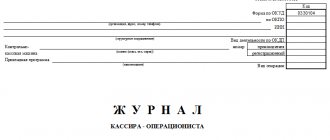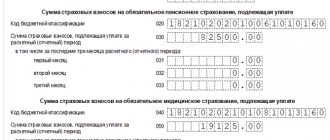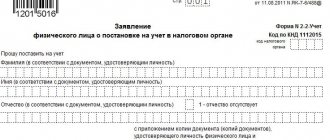Filling Features
The manager of the company forms a commission that inspects the objects after their reconstruction, repair and modernization, after which it draws up a report.
If work with a fixed asset is carried out by employees of the company itself, it is necessary to draw up only one copy of the act - for employees of the accounting department. If repair work is carried out by a third-party company, the act must be drawn up in two copies - one for each party.
When filling out the act in form OS-3, the following points must be taken into account:
- The document must be generated on the day of adoption of the OS;
- To check the condition of objects, the commission must inspect them;
- Information about the objects is written down in the act, after which a conclusion about their condition is formed;
- All members of the commission must certify the document with their personal signatures.
The completed act must be certified by the following persons:
- Participants of the giving and receiving parties;
- Chief accountant of the customer;
- Director of the organization.
The document consists of a title part and two sections. His form is given below.
Form OS-3 sample filling
If the repair or modernization of an object is carried out at the enterprise independently, on its own, then it is enough to fill out the act in one copy and submit it to the accounting department. If repairs or reconstruction are carried out by a third-party contractor, then the OS-3 form must be filled out in 2 copies: one remains with the owner of the fixed assets, the other is transferred to the work contractor.
In the header of the OS-3 act, fill in the name of the customer organization, performer of the work, OKUD form code, OKPO code. Also in the header of the document (form OS-3) you must fill in the contract (order) data: number, date, actual and contractual repair period. The data is confirmed by the signature of the head of the organization.
The main part of the OS-3 form consists of 2 tables. The first table “Information on the state of OS objects at the time of transfer for repair” consists of 7 columns:
- serial number;
- name of the fixed asset item;
- OS object inventory number;
- object passport number;
- factory number;
- replacement cost;
- actual service life of the facility.
The second table “Information on costs associated with repair, reconstruction, modernization of fixed assets” contains 10 columns:
- serial number;
- object of fixed assets;
- type of work done;
- costs incurred to dismantle the facility;
- the cost of work performed under the repair contract;
- the cost of work performed under the contract for reconstruction and modernization;
- actual (real) cost of repairs;
- actual (real) cost of modernization;
- costs incurred to transport equipment;
- notes.
Under the table, in a separate line, indicate the cost of the object after reconstruction or modernization.
On the other, reverse side of the OS-3 act, the commission’s conclusion is given: whether the work was completed completely or incompletely, what was not done during the repair process, what changed in the characteristics of the object after repair or modernization.
The completed form must be signed by:
- chairman and members of the commission;
- a representative of the organization or division who hands over the fixed asset;
- representative of the organization accepting the fixed asset;
- Chief Accountant.
If you want to fill out the act quickly and without errors, check out the example of filling out the OS-3 form. Below is a sample of filling out the OS-3 form:
How to fill out the title part of the act
Filling out the title page of the act is carried out as follows:
- Customer – the name of the company that owns the facility, as well as its OKPO.
- Contractor – the name of the company engaged in repair work, as well as its OKPO.
- Agreement – the date and number of the contract that was concluded between the contractor and the customer. The generated act must be attached to this contract.
- Repair period – the dates when repairs will begin and end (actual and planned) are specified.
- Act – indicates the number and date of execution of the document.
Features of the act, general points
If you have been given the task of creating an act of acceptance and delivery of a fixed asset that has undergone repair work, and you do not know exactly how to do this, carefully read the recommendations below. Look at the example of filling it out - you can easily draw up your document based on it.
Before moving on to a detailed description of the act, we provide general information about the document. Let's start with the fact that today there is no single unified model (the abolition of mandatory forms of primary documents occurred in 2013). This means that an act can be formed in any form or according to a template approved in the accounting policy of the enterprise.
However, the option of using the previously generally applicable OS-3 form is in greatest demand - it is convenient in structure, understandable and contains all the necessary information.
In this case, the method of drawing up the act must be reflected in the company’s regulatory documents.
Form OS-3 can be filled out by hand or on a computer - however, if the second path is chosen, the form should be printed after final formation. This is necessary so that all parties involved in the acceptance and delivery of fixed assets can put their signatures on the document, including those directly involved in the acceptance and delivery, the chief accountant and the director of the enterprise.
It is not necessary to certify the form with a seal - this should only be done when such a condition is in the company’s local documentation.
An act is drawn up in at least three copies (if the act is filled out by hand, then using a copy sheet) - one for each of the interested parties. If necessary, additional copies can be made, which also need to be properly certified.
How to fill out the first section
The first section of the OS-3 act indicates information about the OS as of the date of its transfer for repair:
- 1 – record number in order;
- 2 – full name of the OS that is being sent for repair;
- 3, 4, 5 – inventory, passport, and serial number of the OS;
- 6 – current (residual) price of the object (minus depreciation);
- 7 – the period during which the object was used.
If several operating systems are sent for repair at once, each object must be recorded in the table. There is a separate line for each object.
Certificate of acceptance and delivery of repaired fixed assets OS-3
Also based on this document, funds spent on repairs are recognized. Who is in charge of its design? Filling out the OS-3 form has some features.
The main ones are:
- the paper must be completed on the day the object was accepted;
- a commission specially created for this purpose inspects the facility and confirms its verification;
- the inspection data is recorded in the OS-3 form, after which it is necessary to form a conclusion about the condition of the fixed asset after repair work;
- all members of the commission must certify the act.
To fill out the act, the enterprise must have a special commission that deals with the preparation of such documents on an ongoing basis. Its responsibilities include the transfer of fixed assets for repairs and their acceptance upon completion of the work.
Insurance LawPermalink
It is used for registration and accounting of acceptance and delivery of fixed assets from repair, reconstruction, modernization.
Signed by members of the acceptance committee or a person authorized to accept fixed assets, as well as a representative of the organization (structural unit) that carried out repairs, reconstruction, and modernization. It is approved by the head of the organization or a person authorized by him and submitted to the accounting department.
If repairs, reconstruction and modernization are carried out by a third-party organization, the act is drawn up in two copies. The first copy remains with the organization, the second copy is transferred to the organization that carried out the repair, reconstruction, and modernization.
Data on repairs, reconstruction, and modernization are entered into the inventory card for recording the fixed assets object (Form N OS-6).
You can form Act OS-3 in the following format:
Form OS-3
An act based on the results of work performed related to the repair, reconstruction, modernization of facilities and fixed assets accounting items is drawn up in the OS-3 form.
The document is used as part of the accounting system in cases of acceptance of property objects after work on their restoration, improvement and repair. The unified form of the act is established by law.
Sample and example of filling out the OS-3 form
The document is prepared in accordance with the rules for filling out acceptance certificates. If all the work was performed using the enterprise’s own resources, it is enough to issue only one original report. In other situations, work can be carried out using the services of specialists and equipment from third-party companies upon request of the enterprise. Under such conditions, the work completion certificate must have several copies, one for each participant in the transaction.
Reception of objects after repair, reconstruction or modernization is carried out by a commission appointed by the head of the enterprise. All its members conduct a thorough inspection and verification of fixed assets in order to attest to their technical condition and the possibility of further operation.
The act of form OS-3 must be signed not only by all members of the commission, but also by an appointed person - a representative of a department, workshop, service or a responsible employee of a third-party organization where the process of repair, reconstruction or modernization of fixed assets was carried out.
The document approval procedure is carried out by the head of the enterprise.
Based on the data from the work completion certificate, information is entered into registration cards (according to the OS-6 form), provided for monitoring the movement of fixed assets of the enterprise.
Download the OS-3 act form (Size: 49.5 KiB | Downloads: 2,186)
Is the form or article out of date?
How to fill out the second section of the document
This section contains information about repair costs:
- 1 – serial number;
- 2 – object name;
- 3 – type of repair work;
- 4 – costs of dismantling the facility;
- 5 – cost of repair work performed in accordance with the contract;
- 6 – cost of reconstruction and modernization work under the contract;
- 7 – actual cost of OS repair;
- 8 – actual price of modernization and reconstruction;
- 9 – costs of OS transportation;
- Total – total amounts of actual and planned expenses.
On the reverse side, the commission writes its conclusion and indicates how effectively the work was completed. If any work has not been completed, it is necessary to note which ones.
All members of the commission certify the act with their signatures. Also, it must be signed by the chief accountants of both parties. The director of the customer company approves the act.
How to take into account the recovery of OS objects
As a general rule, costs for the restoration of fixed assets are reflected in accounting in the reporting period to which they relate. Moreover, if, as a result of modernization or reconstruction of operating systems, their initially accepted standard performance indicators (for example, useful life or power) are improved (increased), then such costs increase the initial cost of the modernized or reconstructed object. Repair costs do not affect the initial cost of the asset.
This means that when repairing fixed assets, costs in accounting are usually reflected as part of current expenses as follows (Order of the Ministry of Finance dated October 31, 2000 No. 94n):
Debit of accounts 20 “Main production”, 25 “General production expenses”, 26 “General business expenses”, 44 “Sales expenses”, etc. - Credit of accounts 10 “Materials”, 60 “Settlements with suppliers and contractors”, 70 “Settlements with personnel for remuneration", 69 "Calculations for social insurance and security", etc.
And the costs of modernization and reconstruction, which usually increase the initial cost of fixed assets, are taken into account as follows:
Debit of account 08 “Investments in non-current assets” - Credit of accounts 10, 60, 70, 69, etc.
Debit account 01 “Fixed assets” - Credit account 08








